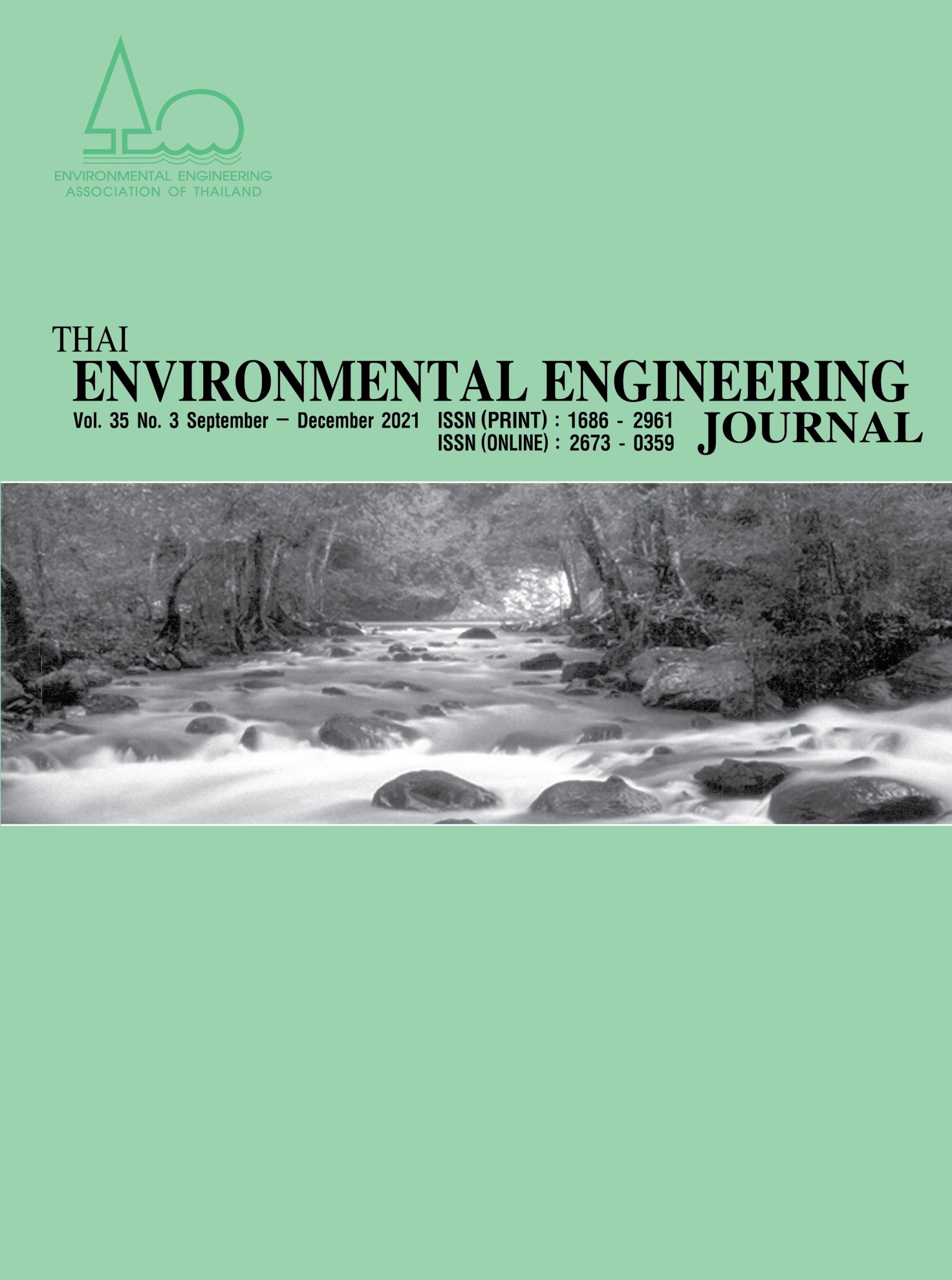The The Estimation of PM2.5 Pollution Using Statistical Analysis and MERRA-2 Aerosol Reanalysis for Health Risk Assessment in Northern Thailand
Main Article Content
Abstract
The landscape of northern Thailand consists of mountains, jungles, and valleys. Open burning, agricultural burning, and bushfires are the major sources of PM2.5 (particles less than 2.5 micrometers in diameter) in the dry season that affect health via non-accidental mortality and morbidity. According to a report by the Geo-Informatics and Space Technology Development Agency (GISTDA), the MODIS satellite detected a fire hotspot of 9,859 points over the nine provinces of northern Thailand between January and May 2019. However, an estimation of PM2.5 concentration over northern Thailand was limited due to the paucity of data. In this study, the method was developed to estimate the PM2.5 concentration by applying a linear regression (MLR) of the PM2.5 monthly data from the Pollution Control Department (PCD), MERRA-2 aerosol reanalysis, and meteorological factors such as temperature, relative humidity, wind speed, rainfall, and air pressure. In addition, the health risk was studied through relative risk (RR) using the risk function in SPSS to calculate the concentration-response coefficients (ꞵ values) between PM2.5 concentration and non-accidental mortality and morbidity; namely chronic obstructive pulmonary disease (COPD), stroke, and ischemic heart disease (IHD). Finally, the concentration of PM2.5 in 2019, over the nine provinces of northern Thailand, was 30.68 μg/m3 while the coefficient of determination (R2) was 0.90 and a root mean squared error (RMSE) was ±4.45. For the health risk, the results are shown that a 10 μg/m3 PM2.5 increase in northern Thailand was associated with an increase in the RR of mortality from COPD, stroke, and IHD about 20.9%, 24.3%, and 24.1%, respectively. In addition, increases in PM2.5 concentration were also associated with the RR of morbidity on COPD, stroke, and IHD by 15.3%, 5.8%, and 11.5% per 10 μg/m3, respectively. For the health burden, the results are shown that PM2.5 contributed to mortality from COPD, stroke, and IHD accounting for 687, 1,818, and 1,095 cases, respectively. Moreover, that PM2.5 caused 9,529, 1,080, and 3,916 cases of morbidity in COPD, stroke, and IHD, respectively. Thus, a decrease of PM2.5 concentration in northern Thailand by 10 μg/m3 could avoid 3,600 mortality and 14,525 morbidity cases.
Article Details
References
The Ministry of Public Health (MOPH). 2015. Guideline for awareness of risk area from air pollution [Online]. Available at: http://www.oic.go.th/FILEWEB/CABINFOCENTER17/DRAWER002/GENERAL/DATA0000/00000200.PDF [Accessed on 28 July 2021].
The announcement of the National Environment Committee No.36 B.E.2553. The Standard of PM2.5 Concentration in Atmosphere. Thai Government Gazette volume 172 on 24 March B.E.2553.
The Pollution Control Department (PCD). 2020. Air monitoring stations [Online]. Available at http://air4thai.pcd.go.th/webV2/download.php?grpIndex=1 [Accessed on 5 September 2020].
Wang, Q. et al, 2019. Estimating PM2.5 Concentrations based on MODIS AOD and NAQPMS data over Beijing–Tianjin–Hebei 19(5): 1207.
Hand, J.L. et al., 2011. Spatial and seasonal patterns and temporal variability of haze and its constituents in the United States: Report. Interagency Monitoring of Protected Visual Environments. in the United States: Implications for the sensitivity of PM2.5 to climate change.
Tai, A.P.K. et al., 2010. Correlations between fine particulate matter (PM2.5) and meteorological variables in the United States: Implications for the sensitivity of PM2.5 to climate change. Atmospheric Environment 44(32): 3976-3984.
Electricity Generating Authority of Thailand (EGAT). 2019. Maemoh [Online]. Available at: https://www.egat.co.th/index.php?option=com_content&view=article&id=2494&Itemid=117 [Accessed on 20 July 2021].
Navinya, C.D., Vinoj, V., and Pandey, S.K. 2020. Evaluation of PM2.5 surface concentrations simulated by NASA’s MERRA version 2 aerosol reanalysis over India and its relation to the air quality index. Aerosol and Air Quality Research 20(6): 1329-1339.
Zhao, R. et al., 2018. Short period PM2.5 prediction based on multivariate linear regression model. PLOS ONE 10: 1317.
Chai, T. and Draxler, R. R. 2014. Root mean square error (RMSE) or mean absolute error (MAE). Geoscientific Model Development Discussions 7: 1525-1534.
Curt, T. 2018. Fire Frequency. Encyclopedia of Wildfires and Wildland-Urban Interface (WUI) Fires 10: 1007.
The Ministry of Public Health (MOPH). 2020. Data of Non-Communicable Diseases. [Online]. Available at http://www.thaincd.com/2016/mission/documents.php?tid=32&gid=1-020 [Accessed on 27 July 2021].
Nathaniel, R.F. et al., 2020. An assessment of annual mortality attributable to ambient PM2.5 in Bangkok, Thailand. International Journal of Environmental Research and Public Health 17(10): 7298.
The Geo-Informatics and Space Technology Development Agency (GISTDA). 2019. Bushfire and smog situation over Thailand in 2019 [Online]. Available at http://fire.gistda.or.th/fire_ report/Fire_2562.pdf [Accessed on 15 January 2021].
Kanabkaew, T. 2013. Prediction of hourly particulate matter concentrations in Chiangmai, Thailand using MODIS aerosol optical depth and ground-based meteorological data. Environment Asia 6(2): 65-70.


